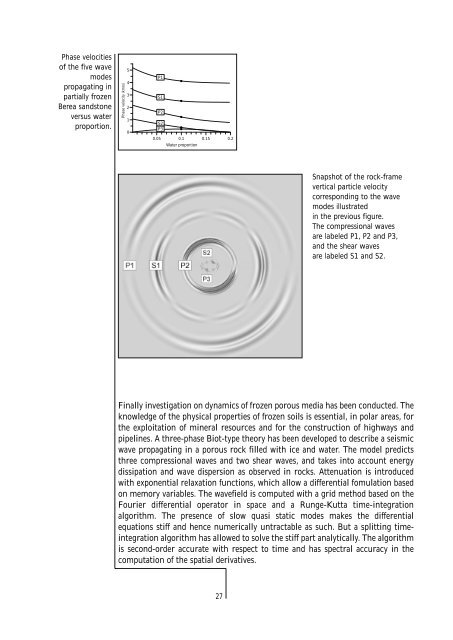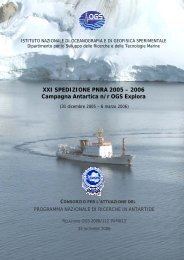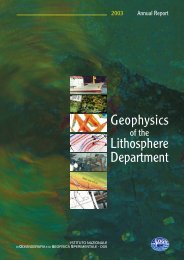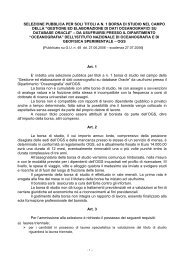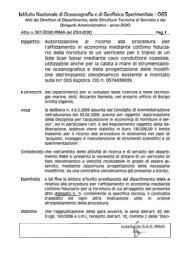Geophysical data acquisition - OGS
Geophysical data acquisition - OGS
Geophysical data acquisition - OGS
You also want an ePaper? Increase the reach of your titles
YUMPU automatically turns print PDFs into web optimized ePapers that Google loves.
Phase velocities<br />
of the five wave<br />
modes<br />
propagating in<br />
partially frozen<br />
Berea sandstone<br />
versus water<br />
proportion.<br />
Phase velocity (km/s)<br />
5<br />
4<br />
3<br />
2<br />
1<br />
0<br />
P1<br />
S1<br />
P2<br />
S2<br />
P3<br />
(a)<br />
0.05 0.1 0.15 0.2<br />
Water proportion<br />
Snapshot of the rock-frame<br />
vertical particle velocity<br />
corresponding to the wave<br />
modes illustrated<br />
in the previous figure.<br />
The compressional waves<br />
are labeled P1, P2 and P3,<br />
and the shear waves<br />
are labeled S1 and S2.<br />
Finally investigation on dynamics of frozen porous media has been conducted. The<br />
knowledge of the physical properties of frozen soils is essential, in polar areas, for<br />
the exploitation of mineral resources and for the construction of highways and<br />
pipelines. A three-phase Biot-type theory has been developed to describe a seismic<br />
wave propagating in a porous rock filled with ice and water. The model predicts<br />
three compressional waves and two shear waves, and takes into account energy<br />
dissipation and wave dispersion as observed in rocks. Attenuation is introduced<br />
with exponential relaxation functions, which allow a differential fomulation based<br />
on memory variables. The wavefield is computed with a grid method based on the<br />
Fourier differential operator in space and a Runge-Kutta time-integration<br />
algorithm. The presence of slow quasi static modes makes the differential<br />
equations stiff and hence numerically untractable as such. But a splitting timeintegration<br />
algorithm has allowed to solve the stiff part analytically. The algorithm<br />
is second-order accurate with respect to time and has spectral accuracy in the<br />
computation of the spatial derivatives.<br />
27


